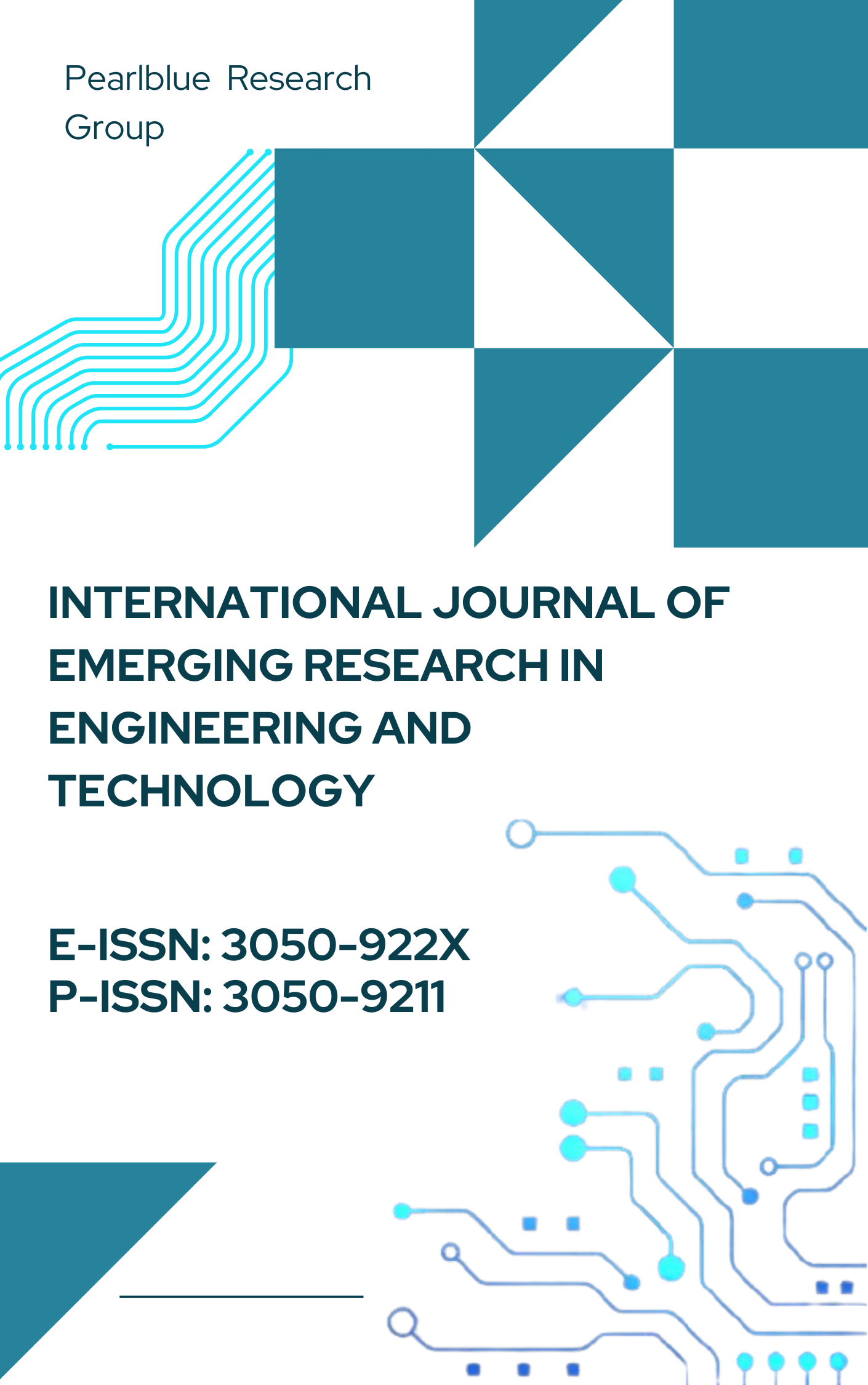Architectural Evolution: Transitioning from Monoliths to Service-Oriented Systems
DOI:
https://doi.org/10.63282/3050-922X.IJERET-V3I4P107Keywords:
Monolith, Service-Oriented Architecture, Microservices, System Decomposition, Scalability, Risk Management, API Gateway, Software EvolutionAbstract
This work involves introducing a roadmap that transforms legacy monolith systems into Service-Oriented Architectures (SOA). The strategies under consideration include decomposition, risk control, and coordination of overhead during the transformation process. Although monolithic applications appear to be easy to create initially, they are problematic to scale, maintain, and deploy in contemporary, dynamic settings. In this paper, I will present an in-depth scheme that can help companies transform from monoliths to SOA, with associated migration rhythms, refactoring tenets, and appraisal criteria. In the study, both quantitative and qualitative research will be conducted to draw comparisons between migration strategies. Factors taken into account will include the alignment and cost-effectiveness of the business, as well as technical viability. Proposed is a systematic decomposition methodology that relies upon a Domain-Driven Design (DDD), restricted contexts, and API-first strategies. The methods of risk reduction concern downtime of operations, service coordination, and the complexity of inter-service communication. Additionally, the paper addresses integration issues, including service discovery, API gateway setup, message queuing, and data uniformity in distributed services. We study the trade-off between orchestration and choreography and their impact on overall system performance. Such methodology ensures iterative migration frameworks, a technology choice framework, and validation by a real-life scenario based on the remediation of a legacy e-commerce solution. The assessment reveals that scaling (up to 40% quicker scaling events have been measured), deployment frequency (an increase of three times), and fault isolation (a 50% reduction in mean-time-to-recovery) can be improved as a result. The asynchronous messaging and CI/CD pipelines that were automated minimized coordination overhead. Lessons learned emphasize the readiness of organizations, the structure of governance, and thorough documentation of a transition. Lastly, it can be applied in the field of architectural evolution, as the research will provide actionable strategies and decision-making tools to carry out successful migrations with the least amount of risk and the greatest amount of business value
References
[1] Evans, E. (2004). Domain-driven design: tackling complexity in the heart of software. Addison-Wesley Professional.
[2] Fritzsch, J., Bogner, J., Wagner, S., & Zimmermann, A. (2019, September). Microservices migration in industry: Intentions, strategies, and challenges. In 2019, IEEE International Conference on Software Maintenance and Evolution (ICSME) (pp. 481-490). IEEE.
[3] Balalaie, A., Heydarnoori, A., & Jamshidi, P. (2015, September). Migrating to cloud-native architectures using microservices: an experience report. In European Conference on Service-Oriented and Cloud Computing (pp. 201-215). Cham: Springer International Publishing.
[4] Lenarduzzi, V., Lomio, F., Saarimäki, N., & Taibi, D. (2020). Does migrating a monolithic system to microservices reduce technical debt? Journal of Systems and Software, 169, 110710.
[5] Newman, S. (2021). Building microservices: designing fine-grained systems. "O'Reilly Media, Inc.".
[6] De Lauretis, L. (2019, October). From monolithic architecture to microservices architecture. In 2019, IEEE International Symposium on Software Reliability Engineering Workshops (ISSREW) (pp. 93-96). IEEE.
[7] Gouigoux, J. P., & Tamzalit, D. (2017, April). From monolith to microservices: Lessons learned on an industrial migration to a web-oriented architecture. In 2017, the IEEE International Conference on Software Architecture Workshops (ICSAW) (pp. 62-65). IEEE.
[8] Salah, T., Zemerly, M. J., Yeun, C. Y., Al-Qutayri, M., & Al-Hammadi, Y. (2016, December). The evolution of distributed systems towards a microservices architecture. In 2016, the 11th International Conference for Internet Technology and Secured Transactions (ICITST) (pp. 318-325). IEEE.
[9] Auer, F., Lenarduzzi, V., Felderer, M., & Taibi, D. (2021). From monolithic systems to Microservices: An assessment framework. Information and Software Technology, 137, 106600.
[10] Himanshu Gupta, "How Your Application Architecture Has Evolved," Solace, 2020. online. https://solace.com/blog/application-architecture-evolved/
[11] Escobar, D., Cárdenas, D., Amarillo, R., Castro, E., Garcés, K., Parra, C., & Casallas, R. (2016, October). Towards the understanding and evolution of monolithic applications as microservices. In 2016, XLII Latin American computing conference (CLEI) (pp. 1-11). IEEE.
[12] Erl, T. (1900). Service-oriented architecture. Upper Saddle River: Pearson Education Incorporated.
[13] Lashley, M., Bevly, D. M., & Hung, J. Y. (2010, May). Analysis of deeply integrated and tightly coupled architectures. In IEEE/ION Position, Location and Navigation Symposium (pp. 382-396). IEEE.
[14] Selmadji, A. (2019). From monolithic architectural style to microservice one: structure-based and task-based approaches (Doctoral dissertation, Université Montpellier).
[15] How to break a Monolith into Microservices, martinfowler, online. https://martinfowler.com/articles/break-monolith-into-microservices.html
[16] Nilsson, M., & Korkmaz, N. (2014). Practitioners’ view on command query responsibility segregation.
[17] Samuel, A. S. G. (2020). Implementation of Service-Oriented Architecture Using Web API & SOMA in E-commerce Web Application. International Journal, 8(7).
[18] Aulkemeier, F., Schramm, M., Iacob, M. E., & Van Hillegersberg, J. (2016). A service-oriented e-commerce reference architecture. Journal of theoretical and applied electronic commerce research, 11(1), 26-45.
[19] Newman, S. (2019). Monolith to microservices: evolutionary patterns to transform your monolith. O'Reilly Media.
[20] Krafzig, D., Banke, K., & Slama, D. (2005). Enterprise SOA: service-oriented architecture best practices. Prentice Hall Professional.
[21] Rahul, N. (2020). Optimizing Claims Reserves and Payments with AI: Predictive Models for Financial Accuracy. International Journal of Emerging Trends in Computer Science and Information Technology, 1(3), 46-55. https://doi.org/10.63282/3050-9246.IJETCSIT-V1I3P106
[22] Enjam, G. R. (2020). Ransomware Resilience and Recovery Planning for Insurance Infrastructure. International Journal of AI, BigData, Computational and Management Studies, 1(4), 29-37. https://doi.org/10.63282/3050-9416.IJAIBDCMS-V1I4P104
[23] Pappula, K. K., & Anasuri, S. (2021). API Composition at Scale: GraphQL Federation vs. REST Aggregation. International Journal of Emerging Trends in Computer Science and Information Technology, 2(2), 54-64. https://doi.org/10.63282/3050-9246.IJETCSIT-V2I2P107
[24] Pedda Muntala, P. S. R., & Jangam, S. K. (2021). Real-time Decision-Making in Fusion ERP Using Streaming Data and AI. International Journal of Emerging Research in Engineering and Technology, 2(2), 55-63. https://doi.org/10.63282/3050-922X.IJERET-V2I2P108
[25] Rahul, N. (2021). AI-Enhanced API Integrations: Advancing Guidewire Ecosystems with Real-Time Data. International Journal of Emerging Research in Engineering and Technology, 2(1), 57-66. https://doi.org/10.63282/3050-922X.IJERET-V2I1P107
[26] Enjam, G. R., Chandragowda, S. C., & Tekale, K. M. (2021). Loss Ratio Optimization using Data-Driven Portfolio Segmentation. International Journal of Artificial Intelligence, Data Science, and Machine Learning, 2(1), 54-62. https://doi.org/10.63282/3050-9262.IJAIDSML-V2I1P107



